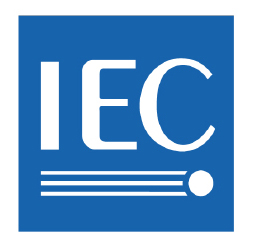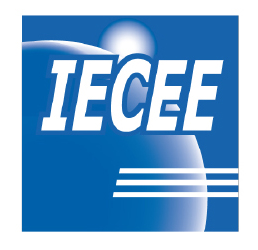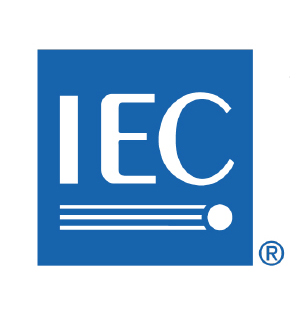GE ULTRASOUND KOREA LTD
GE ULTRASOUND KOREA LTD
| Address(es) |
|
| Website | Not available |
| Status | MEMBER |
| Acceptance date | 2018-03-06 |
Further information
Stage | Country | Name |
|---|---|---|
2 | Denmark |
LEGEND: Scope Limitations
- RA : Audio amplifiers with audio power > 0,5 Watts excluded
- RC : Apparatus with connection(s) to a cable distribution system excluded
- RSH : Shredders excluded
- RT : Apparatus with connection(s) to a telecommunication network excluded
- RV : CRT (cathode ray tubes)/ picture tubes, plasma/LCD or other video apparatus excluded
- ROUT : Equipment intended for installation outdoors excluded
- RWPT : Wireless power transmitter excluded
Category | Name | Tests/Clauses | Acceptance Date | Responsible National Certification Body |
|---|---|---|---|---|
MED | IEC 60601-1:2005 | 4.11 Power Input5.7 Humidity Conditioning5.9.2 Determination of Accessible Parts7.1.2 Legibility of Markings7.1.3 Durability of Markings7.2.6 Voltage Mismatch8.4.3 Voltage or Charge Limitation8.5.5 Defib-Proof Applied Parts8.5.5.2 Defib-Proof Applied Parts, Energy Reduction8.6.4 a Impedance and Current Carrying Capability8.7 Leakage Current Tests8.7.4.5 Earth Leakage Current8.7.4.6 Touch Leakage Current8.7.4.7 a)Patient Leakage Current8.7.4.7 b)Patient Leakage Current, Mains on F-Type AP8.7.4.7 h)Total Patient Leakage Current8.7.4.8 Patient Auxiliary Current8.8.3 Dielectric Voltage Withstand8.8.4.1 Ball Pressure8.9.3 Thermal Cycling for Spaces Filled with Insulating Compound8.11.3.5 Cord Anchorage9.2.3.2 Overtravel End Stops 9.4.2 Stability and Transportability9.4.2.4.2 Mobile Equipment Force for Propulsion9.4.2.4.3 Mobile Equipment Over a Threshold9.4.3.1 Instability from Unwanted Lateral Movement (Including Sliding)9.4.3.2 Instability Excluding Transport9.6.2.1 Acoustic Energy Measurement9.8.2 Tensile Safety Factor9.8.4 Suspension System w/ Safety Devices Loading11 Temperature11.6.3 Spillage11.6.5 Harmful Ingress (Water and Particulates)11.6.6 Cleaning and Disinfection11.8 Interruption of the Power Supply13 Abnormal Operation Testing13.1.2 Power Availability13.2 Impairment of Cooling15.3.2 Enclosure Force15.3.3 Enclosure Impact15.3.4 Drop Impact15.3.5 Rough Handling15.3.6 Mold Stress Relief16.6.1 ME System Leakage Current | 2019-04-25 | |
MED | IEC 60601-1:2005/AMD2:2020 | 4.11 Power Input5.7 Humidity Conditioning5.9.2 Determination of Accessible Parts7.1.2 Legibility of Markings7.1.3 Durability of Markings7.2.6 Voltage Mismatch8.4.3 Voltage or Charge Limitation8.5.5 Defib-Proof Applied Parts8.5.5.2 Defib-Proof Applied Parts, Energy Reduction8.6.4 a Impedance and Current Carrying Capability8.7 Leakage Current Tests8.7.4.5 Earth Leakage Current8.7.4.6 Touch Leakage Current8.7.4.7 a)Patient Leakage Current8.7.4.7 b)Patient Leakage Current, Mains on F-Type AP8.7.4.7 h)Total Patient Leakage Current8.7.4.8 Patient Auxiliary Current8.8.3 Dielectric Voltage Withstand8.8.4.1 Ball Pressure8.9.3 Thermal Cycling for Spaces Filled with Insulating Compound8.11.3.5 Cord Anchorage9.2.3.2 Overtravel End Stops 9.4.2 Stability and Transportability9.4.2.4.2 Mobile Equipment Force for Propulsion9.4.2.4.3 Mobile Equipment Over a Threshold9.4.3.1 Instability from Unwanted Lateral Movement (Including Sliding)9.4.3.2 Instability Excluding Transport9.6.2.1 Acoustic Energy Measurement9.8.2 Tensile Safety Factor9.8.4 Suspension System w/ Safety Devices Loading11 Temperature11.6.3 Spillage11.6.5 Harmful Ingress (Water and Particulates)11.6.6 Cleaning and Disinfection11.8 Interruption of the Power Supply13 Abnormal Operation Testing13.1.2 Power Availability13.2 Impairment of Cooling15.3.2 Enclosure Force15.3.3 Enclosure Impact15.3.4 Drop Impact15.3.5 Rough Handling15.3.6 Mold Stress Relief16.6.1 ME System Leakage Current | 2023-06-13 | |
MED | IEC 60601-2-37:2024 | 201.11 Excessive Surface Temperature Test201.12 Acoustic Power Measurement | 2025-04-28 | |
MED | IEC 60601-2-37:2007/AMD1:2015 | 201.11 Excessive Surface Temperature Test201.12 Acoustic Power Measurement | 2019-04-25 |



